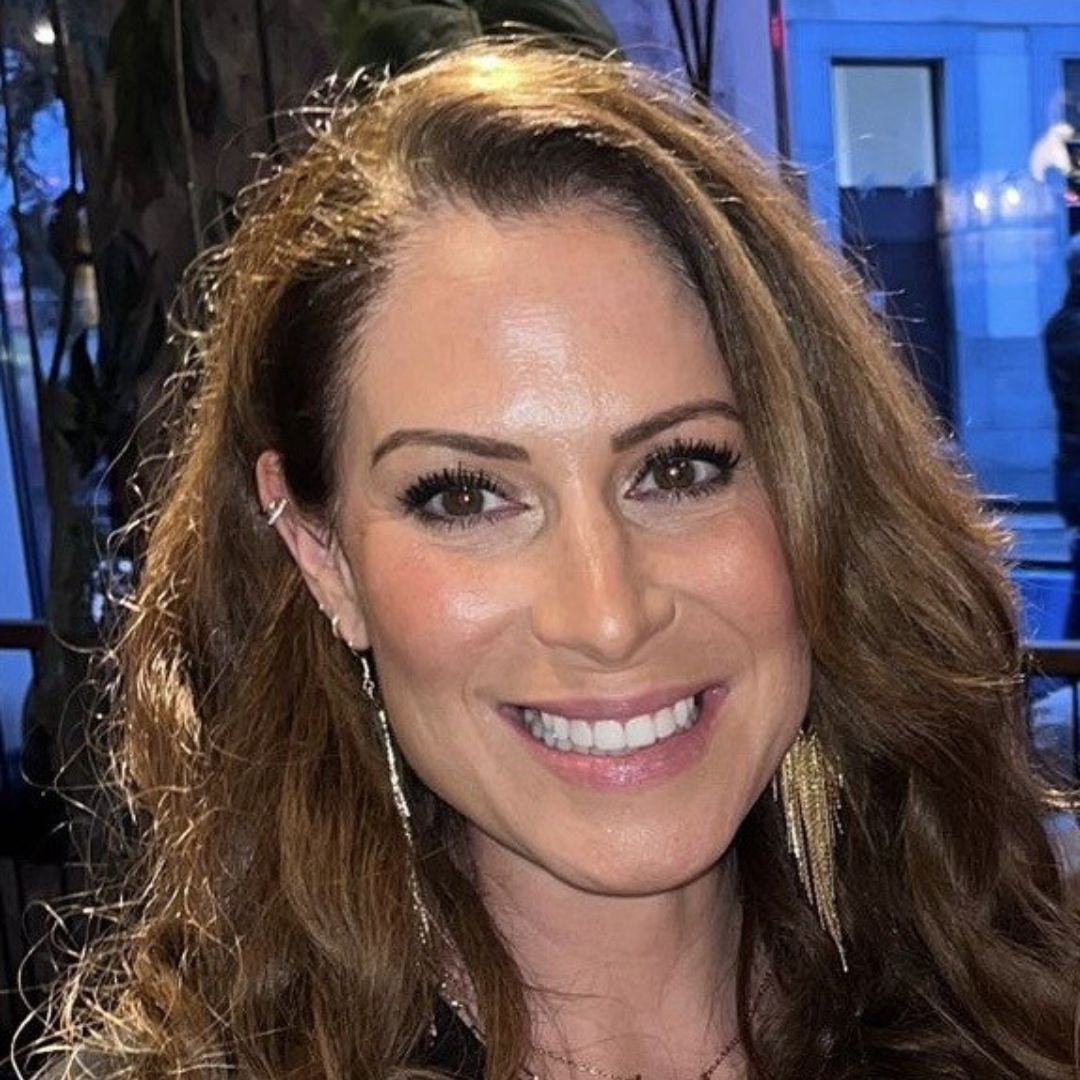As Venus Williams, FKA Twigs and Lupita Nyong'o Open Up – How To Spot the Warning Signs of Uterine Fibroids
As many as 80% of women will develop them in their lifetimes.


Finally, women's health issues are becoming more visible. We're seeing dialogue opening up around topics from PMDD to endometriosis, all-important research funding being granted, vital studies being progressed, and answers finally being reached.
That said, there's still a long way to go - which is why it's been so encouraging seeing world-famous celebrities with global reach open up about their own personal female health struggles in the past few years. Because while it shouldn't be the case, it's always more impactful when celebrities speak out about their experiences.
Take tennis royalty Venus Williams, as an example, who recently opened up about her struggles with uterine fibroids in our fifth Marie Claire UK Women in Sport issue. Not only did she detail the debilitating pain they caused her for decades before her eventual diagnosis in 2016, but the heavy menstrual bleeding and severe discomfort she dealt with while making history on the tennis court.
Quite how she did it defies belief - but sadly, she's far from alone. English singer and songwriter FKA Twigs and Oscar-winning actor Lupita Nyong'o have also spoken out about their struggles, with Nyong'o revealing on Instagram that she had 30 fibroids removed in 2014 - the same year she won the gong for 12 Years A Slave.
And it's not just celebrities, either. Research (such as this study, published in the journal BioMed Central) shows that between 70 and 80% of women will develop uterine fibroids by the age of 50, with cases rising. Yet relatively little is known about the causes and symptoms of these benign growths, and we'd bet a few of you had never even heard of the common female health condition before today.
Below, we've spoken to top experts to debunk exactly what uterine fibroids are, how they occur, what the most obvious symptoms are, plus what to do if you reckon you may be struggling yourself. Whatever you take from this article, do know this - you're not alone, and you will get the help you need.
For more on the female health conditions we should all know more about, don't miss our expert-led guides to the symptoms of PCOS, symptoms of endometriosis, and symptoms of PMS, here, not to mention the perimenopause and early menopause symptoms, here.
Celebrity news, beauty, fashion advice, and fascinating features, delivered straight to your inbox!
As Venus Williams. FKA Twigs and Lupita Nyongo reveal their uterine fibroids diagnoses, experts explain the symptoms
What are uterine fibroids?
Given that they're so common, it's surprising that so few of us know what uterine fibroids actually are; so, let's put that right. Also known as leiomyomas or myomas, fibroids are growths of varying sizes found on the uterus.
"Uterine fibroids, also known as leiomyomas, are non-cancerous growths that develop in or on the uterus (womb)," shares Dr Sophie Strong, lead consultant gynaecologist from The Pelvic Pain Clinic at The Whiteley Clinic. "These clusters of muscle and tissue can vary in size from a few millimetres to very large masses that can significantly change the shape of the uterus. While they’re incredibly common, affecting up to eight in ten females by the age of menopause, many people are unaware that they have them or have even heard of them."
Although little is known about why fibroids develop, we do know that our risk increases as we head towards menopause, with black women disproportionately affected, too.
"Fibroids are very common, particularly in women of reproductive age, and often develop during the years leading up to the menopause," says Dr Suzanne Wylie, GP and medical adviser for IQ Doctor. "Some women may have only one fibroid, while others may develop multiple growths. Depending on their size and location, whether within the uterine wall, on its outer surface, or projecting into the cavity, fibroids can present differently, and symptoms may vary."
A post shared by Lupita Nyong'o (@lupitanyongo)
A photo posted by on
What causes uterine fibroids?
While the specific causes of uterine fibroids aren't fully known or understood, there are some risk factors to be aware of.
"The exact cause of uterine fibroids is not fully understood, but their growth appears to be linked to the female hormones oestrogen and progesterone," shares Dr Wylie. "Fibroids tend to grow during the reproductive years when hormone levels are at their highest and often shrink after the menopause when hormone levels decline."
As touched on above, race and ethnicity play a part, with women of Black, African or Caribbean descent being at greater risk of developing the growths.
"Genetic factors also play a role, as fibroids can run in families," continues Dr Wylie. "Additionally, certain lifestyle and health factors, such as obesity, early onset of menstruation, and being of Black African or Caribbean descent, are associated with a higher risk of developing fibroids."
All this being said, much more research is needed into uterine fibroid risk factors.
What are the symptoms of uterine fibroids?
Interestingly, experts believe that the occurrence of fibroids may be even higher than reported, since they don't always cause any symptoms. However, those women who do experience the condition report a range of symptoms, from mild to debilitating. Let's take a look in more detail.
1. Heavy periods
By far the most common symptom of uterine fibroids is heavy periods, and by this we don't mean a few days of uncomfortable blood loss - we're talking changing pads every half an hour, frequent flooding and being unable to leave the house.
"A common symptom of fibroids is abnormal uterine bleeding," says Miss Mez Aref-Adib, consultant gynaecologist at London Gynaecology. "While symptoms depend on the location and size of the fibroids, most often submucous ones in the inner layer of the womb can cause bleeding problems such as heavy periods or bleeding in between periods. Sometimes the bleeding is associated with heavy clots and spasmodic pain, and can lead to iron deficiency and anaemia."
2. Severe cramps
Alongside heavy bleeding, you're likely also to experience severe cramping and pain. While some discomfort (an understatement if ever we heard one) is common during menstruation, fibroids can cause pain outside of your bleed, too.
"Fibroids can cause a feeling of heaviness and fullness in the pelvic area," explains Miss Aref-Adib. "Large fibroids can cause mass and pressure effects, and if they become larger, they can sometimes outgrow their own blood supply and can undergo what's known as central degeneration. In this case, they become extremely painful and can cause swelling.
"Additionally, depending on the position of the fibroid, they may also cause dyspareunia (pain during sex)."
3. Constipation and urinary issues
At this point, this is reading like a list of menstrual symptoms, but bear with us - there's a lot of overlap.
"Fibroids can press on the surrounding organs such as the bladder and bowel, leading to both urinary frequency and constipation," notes Miss Aref-Adib. "Occasionally, pressure on the bladder neck can lead to urinary retention, where women are unable to empty their bladders. Large fibroids can cause pressure on pelvic blood vessels, which can lead to swelling of legs, deep vein thrombosis and back pressure on the kidneys, too."
4. Fertility issues
It's important to note here that most uterine fibroids won't cause fertility issues, so if you've been diagnosed with them, try not to spiral.
"Symptoms often depend on the size, location, and number of fibroids," advises Eve Lepage, fertility nurse and reproductive health specialist at Clue. "For example, the fibroids that grow in the wall of the uterus (intramural fibroids) are more likely to cause infertility than those that grow outside of the uterus (subserosal fibroids)."
Dr Strong agrees, telling MC UK: "Some people experience fertility issues, particularly if the shape of the cavity of the womb, where a pregnancy would grow, is affected, but symptoms can vary widely from person to person. If you suffer from heavy periods which affect the quality of your life, constant pelvic pressure, frequent urination or difficulties in trying to conceive, it is important that you see your GP to discuss whether you could have fibroids."
A post shared by Venus Williams (@venuswilliams)
A photo posted by on
Can uterine fibroids be treated?
There is some good news here. If fibroids are not causing unwanted symptoms, treatment usually isn’t necessary, but depending on the size, symptoms, and location, there are several treatment options available.
1. Hormonal treatment options
"Medical treatment options depend greatly on what symptoms you have," advises Lepage. "For example, paracetamol and ibuprofen are often used to manage pain. If you suffer from heavy bleeding, your doctor may prescribe you medication that helps reduce or stop the bleeding. These include:
- Oral contraception: the combined hormonal birth control pill
- Oral progestogen: a synthetic progesterone that helps reduce heavy periods
- Tranexamic acid: a medication that helps your blood clot, which reduces the amount of bleeding
- Hormonal intrauterine device (IUD): a small T- shaped device placed at the top of your cervix.
2. Non-surgical procedures
"When fibroids are still causing unwanted symptoms and medication has not helped, removing or destroying them through non-surgical and surgical routes may be an option," says Lepage.
These include:
- Uterine artery embolisation: a procedure where the blood vessels that supply blood flow to the fibroid are blocked.
- Endometrial ablation: a minor procedure that removes the lining of the womb to remove small fibroids, which can help with heavy bleeding.
- MRI-guided ablation: an MRI scan that uses laser or ultrasound energy to destroy the fibroid.
- Ultrasound-guided ablation: a newer technique that uses a sonogram and heat to destroy the fibroid.
3. Surgery
Surgery will usually be a last resort if other treatment options haven't been successful. Surgical procedure options include:
- Myomectomy: a surgery that removes certain types of fibroids from the uterus.
- Hysteroscopic resection of fibroids: a surgery that uses a small camera and instrument to remove the fibroid.
- Hysterectomy: a surgery that removes the uterus (only after other options have been unsuccessful).
Shop MC UK approved health tools now:
Can lifestyle affect uterine fibroid symptoms?
The answer? It's complicated.
"Although there is little evidence that lifestyle changes can shrink or destroy fibroids, a recent study suggests they may help reduce the risks and severity," explains Lepage. "Changes such as eating less red meat, consuming a balanced diet with plenty of fruits and vegetables, minimising stress, and reducing alcohol intake may all be beneficial.
"One study also suggests that exposure to chemicals in plastics called phthalates may increase the risk of fibroids. More research is needed in this field, but reducing your plastic use could be a positive step. It’s a great way to care for your body and the environment at the same time."

Anna Bartter is a freelance journalist who writes about health, fitness and women's lifestyle for publications including Stylist, Metro and Psychologies, among others.
She's always on a quest to find a variety of fun and functional workouts that give you the most bang for your workout buck and she's passionate about championing movement for everyone's mental and physical wellbeing.


